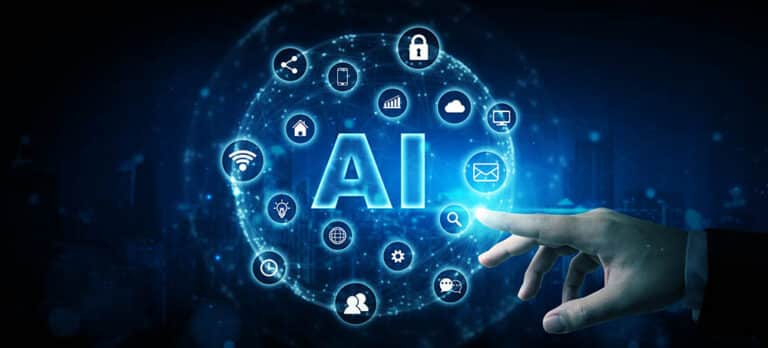Artificial intelligence (AI) and machine learning (ML) have been popularized over recent years, as more industries are looking at their potentials and seeing how they can use one or both to evolve their business and customer experiences. Also, as the usage of these technologies increase, pricing becomes more affordable for SMBs. While some may dismiss these miracles as something from science fiction, the truth is, they’ve already become a reality in many workplaces.
Nowadays, with these emerging trends, AI and ML are not only proving their potentials, but also changing the ways businesses operate, and how customers (and individuals, in general) do things.
Let’s demystify these newer technologies and dig into four emerging AI and machine learning trends that are going into many businesses:
- AI Vs. COVID-19
“Since the start of the COVID-19 pandemic, more and more healthcare professionals are turning to AI to do research and find possible vaccinations for the virus,” says Joe Simmons, a web developer at Lia Help and Paper Fellows. “In 2020 alone, many applications that are AI-enabled have come forward in the fight to stop the COVID-19. Even machine learning is being used in hospitals and healthcare facilities to make research easier to do, and solutions, possibly, easier to find.”
Here are some of the many applications that are being used to help combat COVID-19:
-
- Thermal cameras, sensors, on-the-go temperature checks using smartphones, and similar technologies are used to read temperatures before individuals enter busy public places.
- Robots are sent to implement “contactless delivery” for isolated individuals.
- The StructBERT NLP model from Alibaba helps combat COVID-19 by providing healthcare data analysis with the company’s existing platforms and search engine capabilities.
- Analyzing Business Forecasts With AI
Ever wondered how your business will fare in the future? Or, have you ever wondered how your customers act towards your products and services? AI and ML are here to help.
Since AI is at the heart of data, ML will come in to analyze such data, which is a good thing for businesses. Machine learning-based time series analysis collectively analyzes a series of data over time. As a result, it aggregates data and analyzes it in ways that allow managers to easily make decisions based on that data. That is a good example of how business forecasts are made accurate with ML. Such technology is looking to be used to forecast the future – although we’re far from doing that just yet. But for now, ML-boosted analysis is expected to offer high-accuracy forecasts that are 90-95% accurate, while properly-trained AI networks are expected to capture business features like seasonality and cross-correlation in demand forecasting for things like retail.
- Machine Learning Automation
As talks of ML increases, so are talks on AutoML – Automated Machine Learning. AutoML is now used to execute tedious modeling tasks that once required weeks or months to do. It runs systematic processes on the raw input data to choose the most effective model – all of these tasks were once done by hand!
Here are some services that have already implemented AutoML:
-
- Google’s AutoML (a cloud-computing service that’s a combination of recurrent neural network (RNN) and reinforcement learning)
- Azure AutoML
- AutoKeras
- tpot
- AutoGluon MLaaS
- Lenovo (with DataRobot by AWS)
In hindsight, AutoML can be just as effective as AI, because when used repetitively, you’re more likely to get the most accurate results. Plus, keep in mind that the best choice of AI and ML services will depend on your business’s goals and budget.
- IoT (Internet of Things) And AI Converge
“Generally, industrial Internet-of-Things processes aren’t enough to sustain various businesses,” says Gregory Cornwall, a tech writer at Coursework Writing and Custom Writing. “So now, AI is applied to IoT data to help increase efficiency and reduce downtime for businesses through many methods like predictive maintenance or defect detection.”
But now, the current IoT trends suggest that businesses are looking to machine learning. And, one such ML option that’s being looked at nowadays to improve the IoT software development process is knowledge distillation.
“Knowledge distillation is when an ML network learns how to produce desired results through techniques like reinforcement learning,” adds Cornwall. “Then, a small ML network produces identical results to the large ML network – in other words, model compression. This allows an ML model’s weight to decrease on any given device by up to 2000%, saving money on both energy and hardware.”
Conclusion
So, as you can see, not only do IoTs benefit from the combined power of AI and Machine Learning, but so do businesses and industries. With faster data generations, more accurate analyses, and more concise forecasts, it seems that both AI and ML are on the right track. Despite both parties still being in the “testing” processes, as time progresses, and we see unprecedented things like COVID-19 (which we’ve discussed in one of the above points), they continue to show plenty of promise of what’s to come in many industries. And it seems that both trends show no signs of slowing down any time soon.
Katherine Rundell is an AI writer and editor at Write My Essay and Admission essay writing. She is also a contributing blogger at Undergraduate writing help.

